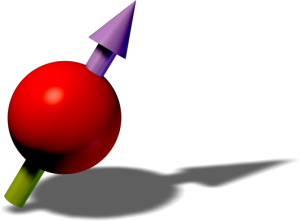by M. O. Yaushev, D. A. Mishin, D. O. Tregubov, D. I. Provorchenko, N. N. Kolachevskii, A. A. Golovizin
Abstract:
We propose a design of a source of cold thulium atoms based on a 2D magneto-optical trap and perform numerical simulation of its operation. Optimal parameters of cooling radiation and the magnetic field are determined; it is shown that for a total radiation power of 50 mW and an atomic oven temperature of 800 K, the proposed configuration can provide a flux of 4 × 10^8 cold atoms per second, and with an increase of the oven temperature, the flux can reach 10^11 atom/s. Such a source can be used for building frequency standards as well as in experiments with quantum simulators and the Bose–Einstein condensate.
Reference:
Two-Dimensional Magneto-optical Trap for Producing a Flux of Cold Thulium Atoms,
M. O. Yaushev, D. A. Mishin, D. O. Tregubov, D. I. Provorchenko, N. N. Kolachevskii, A. A. Golovizin,
Journal of Experimental and Theoretical Physics, 137, 178-186, 2023.
M. O. Yaushev, D. A. Mishin, D. O. Tregubov, D. I. Provorchenko, N. N. Kolachevskii, A. A. Golovizin,
Journal of Experimental and Theoretical Physics, 137, 178-186, 2023.
Bibtex Entry:
@article{yaushev20232dmot,
author = {Yaushev, M. O. and Mishin, D. A. and Tregubov, D. O. and Provorchenko, D. I. and Kolachevskii, N. N. and Golovizin, A. A.},
title = {Two-Dimensional Magneto-optical Trap for Producing a Flux of Cold Thulium Atoms},
journal = {Journal of Experimental and Theoretical Physics},
year = {2023},
volume = {137},
number = {2},
pages = {178--186},
doi = {10.1134/S1063776123080162},
url = {https://doi.org/10.1134/S1063776123080162},
abstract = {We propose a design of a source of cold thulium atoms based on a 2D magneto-optical trap and perform numerical simulation of its operation. Optimal parameters of cooling radiation and the magnetic field are determined; it is shown that for a total radiation power of 50 mW and an atomic oven temperature of 800 K, the proposed configuration can provide a flux of 4 × 10^8 cold atoms per second, and with an increase of the oven temperature, the flux can reach ~ 10^11 atom/s. Such a source can be used for building frequency standards as well as in experiments with quantum simulators and the Bose–Einstein condensate.},
}
